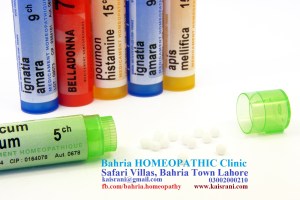 If you wish to experiment with homeopathic medicines, here are 10 medicines that are used for common ailments.
If you wish to experiment with homeopathic medicines, here are 10 medicines that are used for common ailments.
These medicines should be taken in the 6th or 30th potency. Generally, if there is minor pain or discomfort, you should take the medicine three times a day, stopping once health has been restored. If there is more severe the pain, you can consider taking the medicine every one to three hours, decreasing the doses as symptoms are reduced. If you do not observe some improvement after twenty four hours in an acute condition, the medicine is probably not the correct one. If symptoms persist, consider another medicine or seek professional homeopathic care.
It is generally recommended that people treat themselves for non-threatening acute conditions only and obtain professional care for chronic or potential dangerous health conditions.
Allium cepa (onion): Because it is known to cause tearing of the eyes and dripping of the nose, it is a frequent remedy for the common cold and hay fever, especially when there is a thin, watery, and burning nasal discharge that irritates the nostrils. Typically, the person’s symptoms are worse in a warm room and are relieved in a cool room or in the open air.
Arnica (mountain daisy): This is the #1 remedy in sports medicine and first aid. It is used for shock and trauma from injury. It also helps to reduce pain from injury and to speed the healing process. Whether you’re into competitive sports or exercise regularly or if you simply don’t like to feel the pain of an injury, Arnica is the place to start.
Chamomilla (chamomille): Many parents owe their sleep to homeopathy, not because it helps them directly, but because it is so good for their infant. Chamomilla is THE remedy for the irritable infant, especially from teething or colic. The infant cries incessantly, and nothing seems to provide any relief, except carrying them, and even then, the crying begins recurs as soon as the parent puts the child down.
Hypericum (St. John’s wort): This remedy is the first medicine to consider for injuries to the nerves or to parts of the body rich with them, including the fingers, toes, and back. Any injury with shooting pains should be given this remedy.
Ignatia (St. Ignatius bean): One day this remedy will be used by the majority of psychiatrists. It is one of the leading homeopathic medicines for acute grief, anxiety, and depression, especially after a death or separation from a loved one. The person sighs frequently, has a lump in the throat, and may tremble.
Magnesia phosphorica (phosphate of magnesia): This is the most effective remedy for cramps, including menstrual cramps. It has helped prevent many women turn from Dr. Jekkyl into Ms. Hyde as a result of menstrual cramps. It is particularly indicated when a woman’s cramps cause her to bend over and when they experience some relief from warm applications.
Nux vomica (poison nut): This is the premier medicine for ailments exacerbated by conventional or recreational drugs. It is also a common remedy for treating symptoms of overeating or from drinking too much alcohol. Considering how many people have these vices, this is an all too frequent medicine today.
Pulsatilla (windflower): Perhaps the most commommon remedy given to both children and women, this medicine is not indicated for a specific disease but for a specific pattern of physical symptoms and psychological characteristics. Physically, these people are warm-blooded: they wear less clothes than others, prefer open air, and don’t feel as well in the heat. Psychologically, they are a gentle, mind, and yielding person, with a quickly changing emotional state and a strong tendency to want to please others.
Rhus tox (poison ivy): This medicine is the most common remedy for sprains and strains. It is especially indicated when a person experiences a “rusty gate” syndrome, that is, pain on initial motion which is reduced the more the person continues to move. It is also often given to people with the flu or arthritis who experience this similar rusty gate syndrome.
Dana Ullman MPH
